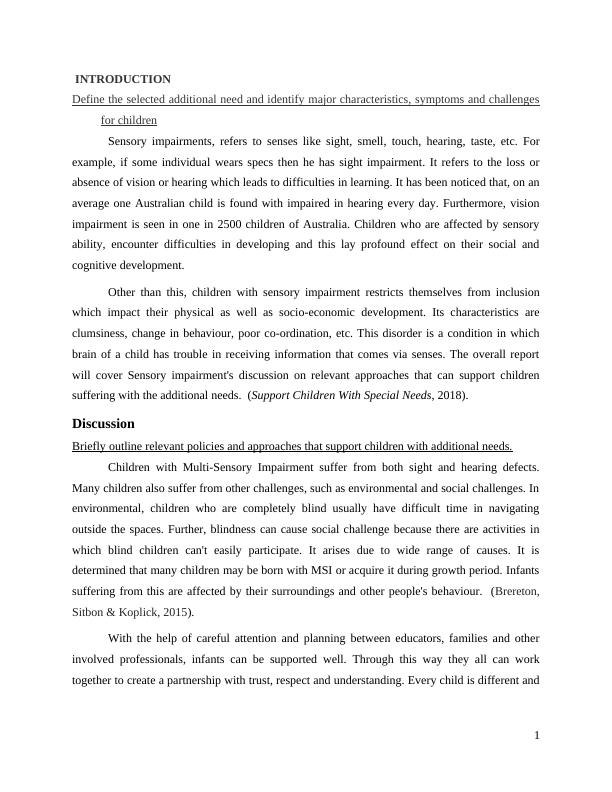Ask a question from expert
Understanding and Supporting Inclusion Assignment
10 Pages2383 Words387 Views
Added on 2020-11-23
Understanding and Supporting Inclusion Assignment
Added on 2020-11-23
BookmarkShareRelated Documents
End of preview
Want to access all the pages? Upload your documents or become a member.
Understanding How to Support SEN & ESOL
|4
|642
|85
Factors Influencing Children and Young People's Development in Residential Care
|23
|8199
|57
Inclusion Plan for Child with Autism: Strategies and Support
|6
|2407
|324
Facilitating Learning for Students with Disabilities
|8
|3905
|70
Visual Impairment in Children
|4
|810
|201
Facilitating Learning for Students with Disabilities
|8
|3930
|26


